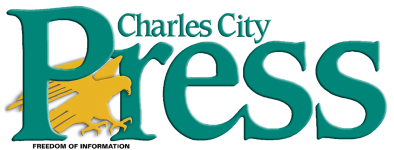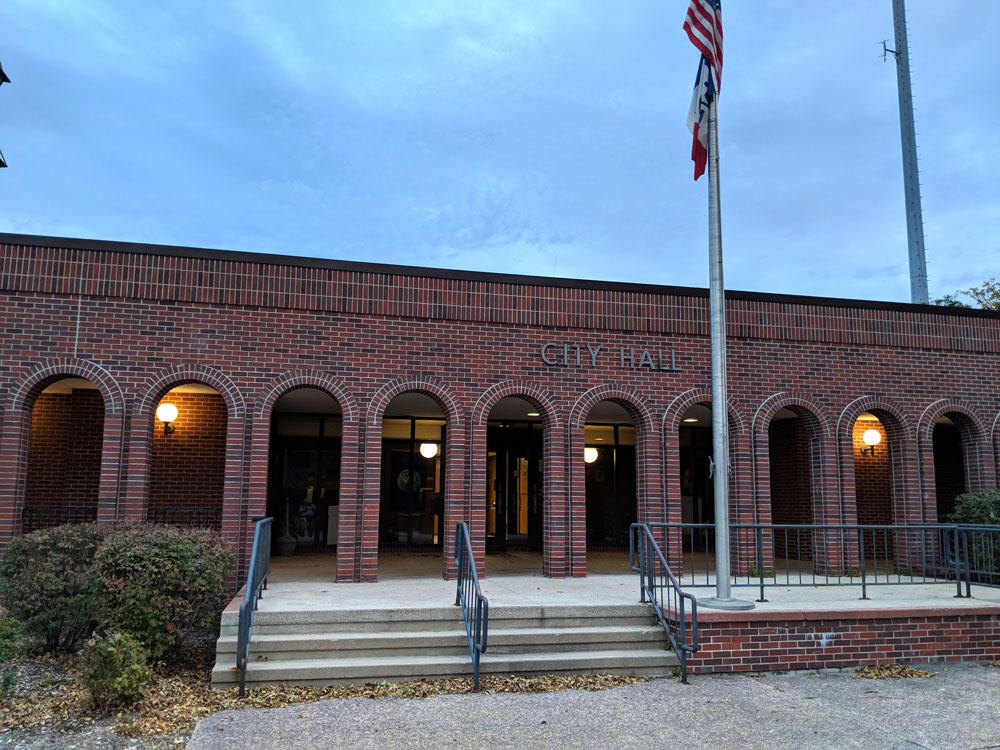Group continues EMS tax levy educational blitz on Floyd County ballot question
By Bob Steenson, bsteenson@charlescitypress.com
With fewer than three weeks left until the Nov. 5 election, the Floyd County EMS Advisory Council is going all out to educate potential voters about the emergency medical services property tax levy question that will be on all Floyd County ballots.
The question asks voters if they will allow the county to begin collecting a property tax of up to 69 cents per $1,000 of taxable valuation, to collect up to but no more than $670,000 annually for five years, to support ambulance service and other EMS in the county.
The Advisory Council’s members say the issue is simple – if the levy passes then high quality ambulance service will continue to be available throughout the county. If it fails, well, then the future is less certain.
The council approved an advertising blitz in the three county newspapers including the Press and on local radio. Members will also continue to talk with community groups and at events, and a handout giving detailed information about the proposed levy and its impact will be made available at various sites throughout the county and on the Floyd County government website, www.floydco.iowa.gov.
The group continues to explore ways to get its educational message out, but is concentrated on spreading what it feels is the most important information, put together in a handout by Advisory Council Chair Keith Starr and edited and revised continually by group members and others.
Here is the latest version of that informational paper, edited for length:
Floyd County Emergency Medical Services Tax Levy Proposal
On Nov. 5, Floyd County voters will decide on a five-year property tax levy to be used to support emergency medical services in the county. The funds will be placed in an EMS trust fund and can only be used for EMS expenses as defined under Iowa Code, with the annual collection amount and spending decisions made by the county Board of Supervisors.
The plan can collect no more than $670,000 per year.
The measure requires a 60% majority to pass.
FREQUENTLY ASKED QUESTIONS:
When will the vote take place?
• Tuesday, Nov. 5, at the regular county polling places. Advance voting started Oct. 16 at the Floyd County Courthouse.
How will this change affect residents and their taxes?
The current best estimate is that collecting the full $670,000 figure would raise the taxes on a residence or on a commercial property with an assessed value of $100,000 by about $30 per year.
Tillable farmland with a CSR of 77 would see an increase of about 80 cents per acre.
Why this change?
Ambulance service that just a few years ago operated without a subsidy is this year requiring $427,450 in public subsidies to remain in Floyd County.That money is paid by Floyd County, the city of Charles City and with help from the Floyd County Medical Center. The amount is increasing every year.
Many counties in Iowa have either passed an EMS essential service levy or are considering it to meet rising costs, since the state made it an option in 2021.
Increasing expenses primarily related to wages, supplies and equipment maintenance/replacement have contributed to EMS revenue shortfalls. The reimbursement rate from Medicare and Medicaid has not kept up with the cost of providing services.
What are the benefits of EMS services in Floyd County?
Having trained volunteers as well as full-time paramedics and EMTs available 24 hours per day could make the difference between life and death in a medical emergency.
How are the ambulance services funded now?
The various volunteer services receive some support from the local city governments and the county. They also fundraise and operate from the revenues from their services.
American Medical Response (AMR) is funded by operating income and a $427,450 current year subsidy received from Floyd County and the city of Charles City, with contributions from Floyd County Medical Center.
The cost of providing services has risen more quickly than income, and many private ambulance operations have ceased in Iowa because of the reimbursement rate from the federal aid programs and medical insurance.
Will the levy lead to a government-operated ambulance service?
Maybe.
The Floyd County Ambulance Commission as well as the EMS Advisory Council looked at moving to a public ambulance service, but concluded that the current system is still less expensive and serves the citizens well. If an opportunity arises, EMS levy funds could be used to develop and support a government-run service (operated by the city, county, etc.).
Who answers when you call for an ambulance in Floyd County?
Three ambulance services directly serve Floyd County.
• Greene Volunteer Ambulance is located in Greene and responds to a large area in southern Floyd County.
• Nora Springs Volunteer Ambulance responds to calls in Nora Springs, Rudd, Rockford and surrounding townships.
• AMR is based in Charles City and responds anywhere in the county, 24 hours a day, with advanced life support (ALS) service and basic life support (BLS), staffed by paramedics and EMTs
How will this vote change EMS service in Floyd County?
It will provide an option for more significant subsidies to the Nora Springs and Greene ambulances and to other EMS services, providing funds that can be used for training, equipment, and providing a stipend to attract needed volunteers by offsetting some of their costs.
If the vote does not pass what will happen?
Current service levels will be difficult to maintain. Support for volunteer services may decrease. Increasing subsidy costs for AMR may require cutbacks in the service level provided.
To maintain AMR subsidies, other cuts in city and county general fund expenditures may be required. The general funds also provide things like public safety (police, sheriff and fire protection), city and county libraries, parks and other recreation areas as well as providing economic development tools and infrastructure maintenance and improvements.
Passing the Essential Services EMS Tax Levy by at least the required 60% would:
• Allow collecting up to $670,000 per year to be used solely for EMS expenses.
• Sustain current 24/7 ambulance service levels and maintain volunteer EMS organizations.
• Allow the EMS Advisory Council to continue to assess service requirements and make budget recommendations to the Board of Supervisors.
What are some examples of how finances have changed?
• Staffing and training expenses have increased.
• Insurance-related costs have increased industry-wide.
• Equipment repair and replacement and cost for supplies have risen steadily. A new ambulance costs up to $300,000 with an estimated life of five years.
• Payments for EMS services through state and federal programs (Medicaid, Medicare) and some private insurers have dropped dramatically.
Why is the Essential Service Tax so important?
Floyd County residents need high-quality, dependable emergency medical services available to respond within the county 24 hours a day, seven days a week.
The number of elderly residents in the county makes quickly available emergency medical care even more of a necessity.
Funding is needed to support volunteer services throughout the county.
For questions and comments:
Contact Keith Starr at KeithStarrCharlesCity@gmail.com or 641-220-1345.









Social Share